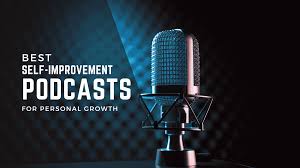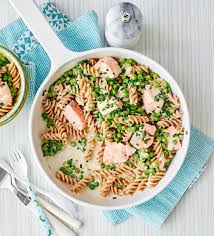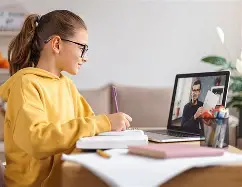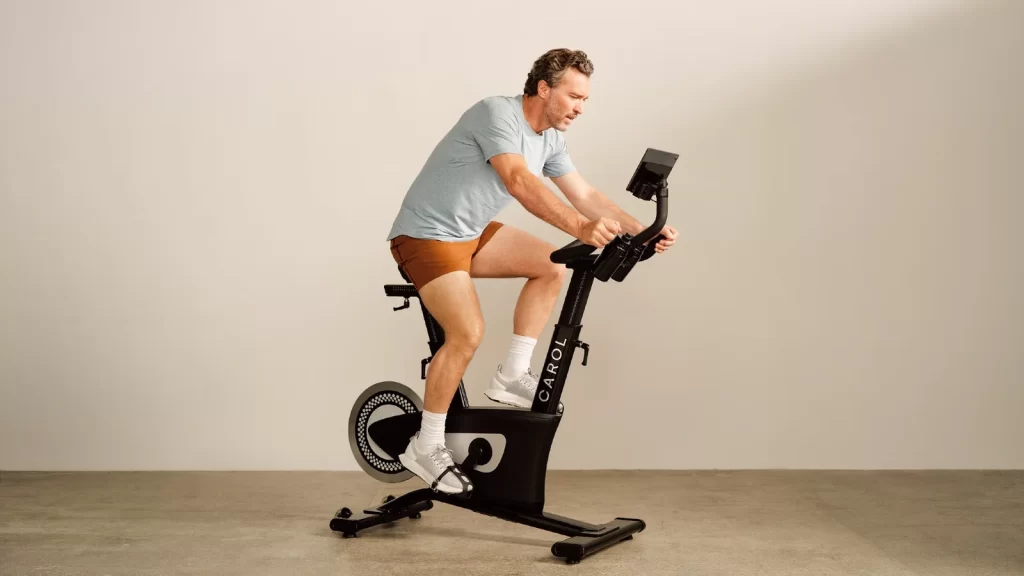Is daily life becoming increasingly overwhelming for you? Relaxation isn’t just a powerful tool; it can be life-changing when combined with anxiety relief. Mindfulness is a truism for ‘calm’ and for a good reason.
Being mindful entails being present at the moment. Adding mindfulness judgement-free to your thoughts, feelings, and sensations without evaluating yourself can reduce anxiety and enhance overall well-being. Even mild mindfulness exercises can make a difference throughout the day.
In this article, we will outline the simplest breathing exercises and mindful movement to help achieve balance. Together, let us begin your journey towards mindfulness.
Key Takeaways
• Useful exercises to effectively combat anxiety through mindfulness techniques
• Strategies that enable incorporation of mindfulness into daily life
• The positive impact of mindfulness towards general health
• Effective approaches to anxiety control using mindfulness
The Science of Mindfulness and Anxiety Reduction
Mindfulness alleviates anxiety while facilitating focus and attention. This unique trait of residing in the present confronts stern anxiety by breaking the unending worry cycling loop.
How Mindfulness Rewires the Anxious Brain
The brain undergoes mindfulness-related changes in its emotional centres through neuroplasticity, the remarkable capability enabling alterations in brain structure and function, resulting in lowered anxiety levels and enhanced well-being.
Mindfulness can help strengthen the prefrontal cortex. This region is responsible for regulating emotions and making decisions. In parallel, mindfulness also decreases activity in the amygdala. The amygdala is the fear centre of the brain.
Research-Backed Benefits for Mental Wellness
Research supports the mental health benefits of mindfulness. Some studies have shown that it can reduce anxiety symptoms to a great degree. Additionally, it improves the mood, cognitive functions, and general well-being of an individual.
Incorporating mindfulness into one’s daily routine is proven to help people manage anxiety better. Mindfulness is a powerful way to boost the mental health of an individual.
Top 10 Mindfulness Practices That Reduce Anxiety Daily
Mindfulness practices can ease daily anxiety. Integrating these practices into your daily routine can improve your general wellbeing. Below are a few mindfulness techniques that relieve anxiety.
Why These Specific Techniques Work for Anxiety
The compilation of the top 10 techniques is the result of scientific studies on mindfulness and its use for anxiety relief. These techniques are impactful as they help in relaxing, changing the brain, and increasing self-awareness. Anxiety can be managed effectively over a period of time through the techniques.
Creating a Sustainable Practice in Your Busy Life
Setting aside time for mindfulness meditation is difficult. However, establishing mindfulness as a habit is important; starting with a shorter duration of 5-10 minutes a day is manageable. Consistency builds up the required habit to enjoy the benefits of mindfulness meditation.
Mindful Breathing: Your Portable Anxiety Relief Tool
To relieve anxiety, mindful breathing works best. It can be done anywhere and anytime easily. Furthermore, it helps resolve anxiety and helps focus the mind.
Box Breathing Method for Immediate Calm
The box breathing method is fairly elementary. Breathe in for 4 counts, retain for 4, breathe out for 4, and hold again for 4. The breath creates a “box” pattern, granting tranquility and serenity. It is excellent for stressful situations as it reduces the heart rate while calming the nerves.
4-7-8 Breathing Technique for Sleep Anxiety
The 4-7-8 technique, “relaxation breath” is effective when dealing with sleep anxiety. The process entails inhaling for 4 counts, holding it for 7 counts before exhaling for 8. This relaxes the body, predisposing it to sleep.
Breath Awareness During High-Stress Moments
In stressful moments, keeping track of your breath helps maintain concentration and leads to the elimination of anxiety-laden thoughts. It allows returning to the present. Breath awareness reduces management anxiety, thus improving overall breathing practice makes stressful situations bearable.
Body Scan Meditation: Releasing Physical Tension
Body scan meditation techniques are some of the most preferred when it comes to relieving anxiety. It is a relaxing mindfulness technique that promotes deep relaxation. This method is useful in alleviating the somatic aspects of anxiety.
To begin, find a relaxing area that is free from distractions. Either lie down or sit in a comfortable position. Close your eyes then take deep breaths which expand your chest and deflate your chest toward yourself.
5-Minute Body Scan for Beginners
Start with the focus on your toes. Feel any discomfort, tension, or calm you may be feeling there. Continue to step up the body, performing scans on each part. These will enable you to feel your body parts and assist in releasing tension.
• Start with your toes
• Then, move up through your body scanning every single part
• Take note of any tension, sensation, or relaxation at that area
Identifying and Releasing Anxiety-Held Tension
While engaging in meditation, you will intuitively feel the bodily spots where tension is located. Accept these areas for tension relief signs of anxiety. This alone will greatly relieve anxiety.
Bedtime Body Scan for Better Sleep
Conducting a body scan just before going to bed will assist you in sleeping deeper. It relaxes your body and your mind making it rather easy to sleep. Doing this consistently will improve the quality of your sleep.
Incorporating body scan meditation into one’s daily regimen aids in alleviating anxiety and enhancing overall health.
Mindful Walking: Moving Meditation for Anxiety
Meditation on anxiety can be aided through mindful walking, which is a transformation of your ordinary daily walk into a meditative practice that is soothing. It entails paying attention to one’s surroundings, the sensations of the feet and the ground, and breathing. This can be easily turned into a mindfulness meditation.
Walking while consciously aware of everything happening around and within oneself heightens the mindful walking experience. As you walk, notice the environment surrounding you and interact with it engagingly. This creates an opportunity to reduce anxiety.
Transforming Your Daily Walk into Mindful Practice
Take note of your body while moving outdoors; this can assist with focusing on the environment. Attend to how your legs are moving. Grounding with breath in motion will serve your purpose. Grounding, such as feeling your feet on the surface, listening, or head nodding, enhances the exercise of movement meditation further.
Grounding Techniques to Use While Walking
When anxious, grounding techniques can boost your focus and bring you to the present moment. One such technique which can be performed while walking is the 5-4-3-2-1 method. With this method, list five things you see, four things you feel, three sounds you hear, two smells, and one taste. This method can assist in changing focus from worries to the immediate moment.
Urban vs. Nature Walking Mindfulness
Both nature walks and urban walks can offer mindfulness. Nature walks offer a wider variety of sounds such as birds chirping and leaves rustling. While urban walks can also be distracting, there is the ability to focus and practice mindfulness tips on the sights and sounds of the city. Use whichever type of environment you like and will commit to experiencing regularly.
Five Senses Awareness: Grounding in the Present Moment
Anxiety can be effectively managed when attention to the senses is exercised. This technique focuses on bringing the individual back to the present and is referred to as five senses awareness. It minimises the level of anxiety that one may be experiencing by aiding the person in concentrating on what is available to see, hear, touch, taste, and smell.
The 5-4-3-2-1 Technique for Panic and Anxiety Attacks
Panic and anxiety attacks can effectively be managed using the 5-4-3-2-1 techniques. It comprises:
• Seeing around you and listing five things that you can see.
• Touch or feel four things available in your surroundings.
• Identify three things that you can hear.
• Two things that you can smell or fragrances that you identify.
• One thing that you can taste.
This technique assists in disengaging the individual from previously held thoughts to bring them into the present.
Mini Sensory Check-ins Throughout Your Day
Setting aside a couple of moments in a day to frequently check your surroundings with the help of your senses helps to manage anxiety. Whenever drinking coffee, concentrate on the smell, taste, feel, and the cup in hand to ensure all five senses are incorporated.
Creating a Sensory Anchor for Anxious Moments
Sensation can also be an anchor, something to focus on when one feels anxious or stressed. It may include touches, scents, accessories or anything tangible. If this anchor is attached to calm, it can bring peace during trying moments.
Mindful Eating: Nourishing Body and Mind
Mindful eating does more than help with anxiety; it encourages focusing on the present moment. The sight, smell, and taste of food are things to be appreciated when eating. This cultivates a better experience when eating and improves one’s dietary choices.
Mindful eating encompasses more than simply eating; engaging all senses makes it a full experience. This nurtures positive self-regard while eating, which one’s body often needs and can relieve stress and anxiety.
Single Bite Meditation Practice
Sheila’s single bite meditation is an exemplary practice that draws on eating one bite of food at a time. One learns to appreciate the taste, texture, aroma, and overall experience, which cultivates gratitude towards food.
Breaking the Anxiety-Emotional Eating Cycle
Eating because of anxiety becomes a vicious cycle for some. Mindful eating allows one to track their hunger and satiety better, which helps avoid consuming skillfully selected food accompanied by stress.
Mindful Meal Planning for Reduced Stress
Mindful meal planning can help alleviate stress. Picking nutritious foods and paying careful attention to preparation gives one a level of control that makes meals enjoyable and punctual. This ultimately leads to a sense of peace and tranquility at mealtimes.
Incorporating mindful eating into one’s daily routine improves various aspects of life. It optimizes one’s relationship with food, lowers anxiety, and improves overall health.
Loving-Kindness Meditation: Cultivating Self-Compassion
As discussed in the previous paragraph, loving-kindness meditation helps with anxiety management and teaches how to be kinder to oneself and others, therefore improving acceptance and lowering anxiety levels.
Self-Compassion Phrases for Anxiety Relief
Employing self-compassion phrases is an essential step in loving-kindness meditation. Self-compassion phrases assist in calming one’s mind. As such, they can be modified for maximum effect. Phrases like, ‘may I be happy, may I be healthy, and may I be at peace’ help achieve just that.
• May I be free from suffering
• May I be kind to myself
• May I accept myself as I am
Extending Kindness to Others When Feeling Anxious
Extending kindness is also part of loving-kindness meditation. When anxious, it may be beneficial to think of others as this might help to change one’s perspective. During anxiety, begin with a person for whom they are grateful. After saying, ‘may they be happy, may they be healthy, and may they be at peace’, shift to people whom they find difficult to interact with, and even those that annoy them.
Using Loving-Kindness During Self-Critical Moments
Being critical of oneself can create anxiety. Loving-kindness meditation offers kindness during times when we are particularly harsh on ourselves. When noticing harsh self-criticism, one has to shift towards loving-kindness phrases. This allows us to relax and not be so critical which ultimately brings our anxiety levels down.
Mindful Journaling: Processing Anxious Thoughts
In dealing with anxiety, mindful journaling has proven to be an effective technique. It allows a person to make sense of concepts and issues, thereby facilitating the proper management of anxiety.
This approach captures the mental triggers of anxiety and seeks to enhance them by devising more effective coping strategies.
Anxiety Brain Dump
Attempt the anxiety brain dump technique. Take a timer and list every thought, no matter how trivial, without any stop. Doing the mindless write down clears the congestion in the mind and evokes a sense of serenity.
Gratitude Journaling
Gratitude journaling is equally important. It focuses on noting items of appreciation for each day. This shifts the focus from worrying to positive thinking, hence enabling balance.
Tracking Anxiety Patterns
You can also use journaling to track anxiety patterns over a given period of time. You may evaluate the effectiveness of mindfulness techniques over time. Reviewing the journal entries, the user observes the improvements made and strategies still needed.
Integrating mindful journaling into daily practices is an effective form of managing anxiety and promoting self-care. A longitudinal entrance reflects a remarkable change in well-being.
Digital Mindfulness: Reducing Technology-Induced Anxiety
Digital mindfulness techniques help us tackle anxiety stemming from our technology. Technology is utilised for work, communication, and entertainment in our modern world. There are gaps where we can protect our mental wellbeing.
Creating Intentional Tech Boundaries
Defining distinct boundaries with technology is vital to achieve digital mindfulness. Set specific times to check emails or social media, and do your best to remain consistent. For instance, check work-related emails only during the stipulated work hours and not after leaving the office.
Use specified apps to monitor and restrain your screen time, making it easy to enforce these boundaries.
Mindful Social Media Consumption
Being cognisant of social media elements that increase anxiety is equally important. Follow user accounts that enhance your mood. It’s easy, but try to avoid doing self-identity comparisons.
Consider taking breaks from social media, or opt for what is called “social media detoxes” to unwind.
Tech-Free Zones and Times in Your Home
Establish some areas or components of the house where no technology is to be used in order to reduce anxiety. Designate certain rooms like the bedroom where devices are not allowed in order to help you sleep more soundly. Implement a “no technology at the dinner table” policy which will lead to improved conversations and engagement and shift dinner conversations.
Utilising these digital mindfulness approaches allows for better modifications in one’s relationship with technology.
Mindful Movement: Releasing Anxiety Through the Body
To soothe, calm, and relieve the anxiety pervading the mind, mindful movement as a deeply rooted philosophy helps. This technique combines movement with attention to provide a better and less stressful experience.
A combination of movement requires strength and bears demanding techniques like yoga and various forms of stretching, helping participants and students achieve their goals. This pain relief improves anxieties regarding achieving goals.
Simple Yoga Poses for Anxiety Relief
Yoga integrates poses, meditation and breathing to achieve mental calmness. For advanced students and those facing anxiety, Child’s Pose, Cat-Cow Stretch, and Downward-Facing Dog enhance active and deep calm breathing. They are also very helpful for easing and releasing built up tension during the day.
Tension and Release Progressive Muscle Relaxation
PMR and various muscle relaxation techniques involve flexing, focusing, and then relaxing muscle sections. Releasing muscle tension and relaxing aids in relieving physical stress which results in heightened anxiety levels. This suits individuals with high amounts of stress symptoms.
Mindful Stretching for Desk-Bound Anxiety
Mindful stretching when combined with desk work becomes a great solution for anxiety. Techniques such as shoulder shrugs and neck rolls relieve tension. In combination, these techniques lighten anxiety caused due to hovering goals and improve overall mental health positively, enabling a person to self-regulate emotions.
Acceptance Practice: Making Peace with Anxiety
Acceptance practice, a powerful technique for alleviating anxiety, focuses on living with anxiety as it is, rather than trying to fight it—an approach that can often worsen the condition.
Acceptance and mindfulness go hand in hand. Acceptance means being present with no form of judgment. Accepting the reality is that we can foster a healthier relationship with anxiety. We will look at the RAIN method, how to observe anxiety, and how to cope with difficult emotions.
The RAIN Method
The RAIN method encompasses four steps: Recognize, Allow, Investigate and Nurture. It is an effective guide for dealing with anxiety and difficult emotions.
• Recognise: Acknowledge the presence of anxiety or difficult emotions.
• Allow: Accept the presence of that reality and let it be.
• Investigate: Look at the issue with gentleness and open enthusiasm.
• Nurture: Show compassion and sympathy toward the person you are.
Applying the RAIN method promotes reduced reluctance to acknowledging anxiety and, in turn, the less powerful it becomes.
Observing Anxiety Without Identifying With It
An important part of acceptance practice is observing and letting anxiety engulf you without constraining your identity. We perceive anxiety differently as a transient feeling rather than our essence.
Classifying anxious moments with labeling (I am feeling anxious) assists in detachment from the anxiety. This facilitates smoother navigation during anxious experiences.
Working With Difficult Emotions Mindfully
Mindfulness is very useful for difficult feelings like anxiety. Being present can help ease their impact.
- Begin by recognising the feeling.
- Consider the sensations it brings.
- Treat yourself gently.
Such self-compassion exercises help us build resilience against anxiety and other difficult emotions.
Conclusion: Building Your Personal Anxiety-Relief Mindfulness Routine
Anxiety can be constructively managed through a holistic approach that combines techniques like exercise and dietary planning. All of these methods should be incorporated into a daily routine as complete and sustained anxiety relief hinges on the consistent practice of mindfulness techniques throughout one’s day. The ten practices of mindfulness grouped under a single framework enable systematic construction of wellness habits resultant in reduced anxiety levels.
Begin with focused techniques such as mindful breathing, gentle body scan meditation, or mindful walking. Combining these small practices initially leads to a more sustainable routine over time.
While perfection and an end goal may be tempting, it is important to appreciate the process, especially while building a routine. Practising on a regular basis allows noticing more subtle triggers of anxiety while leading to a much more serene and balanced life.
Incorporating mindfulness allows taking great strides towards improved personal well-being and orienting one’s life towards sustained anxiety relief. Finding the ideal routine allows enjoying its tranquillity along with reduced anxiety.
FAQ
What is mindfulness and how does it help with anxiety?
According to experts, mindfulness centers around being present in a given moment. It involves focusing on thoughts, emotions, and physical sensations in a non-evaluative manner. It helps anxiety by diminishing concern about past and future events. It also encourages relaxation and bolsters self-awareness.
How long does it take to see the benefits of mindfulness for anxiety relief?
People have reported noticing positive impacts on anxiety within minutes of mindful exercises. Consistency over weeks or months, however, is bound to enhance these benefits further. Mindfulness practices can enhance mental wellbeing and relieve anxiety symptoms.
Can mindfulness practices be done anywhere, or do I need a specific space?
Mindfulness can be practiced anywhere, at any moment. Although quiet environments tend to be more ideal, breath work exercises, body scanning, and mindful walking can be done virtually anywhere whether one is at home, at work, or in public.
How can I incorporate mindfulness into my busy daily schedule?
Mindfulness can be achieved through small, incremental steps when one is operating on a tight schedule. Focus on taking a few deep breaths during breaks or consider a short body scan. Mindful eating, walking, and showering are also self-care activities that can be exercised during daily routines.
Are there any mindfulness apps or resources you recommend for anxiety relief?
Absolutely. There are numerous apps and resources focused on anxiety relief. Headspace, Calm, and Insight Timer are all examples of apps that provide guided meditations and breathing exercises tailored to the user’s individual needs and preferences.
Can mindfulness replace traditional anxiety treatments, or should it be used in conjunction with other therapies?
Mindfulness is an excellent supplementary practice alongside traditional anxiety treatment methods like CBT and medication. It is effective on its own, but it is more helpful when combined with other therapies. Always seek a trained professional to ensure optimal outcomes.
How can I make mindfulness a sustainable part of my daily routine?
When it comes to cultivating mindfulness, one must strive to create achievable milestones. It’s best to do it at the same time each day and associate mindfulness with mundane tasks. Finding a mindfulness partner or community and tracking one’s progress also fosters motivation.
Can children and teenagers benefit from mindfulness practices for anxiety relief?
Of course they would. Mindfulness provides children and teenagers with practical techniques to manage emotions, relieve stress, and improve concentration. There are many programmes and resources tailored to these young users trying out mindfulness for the first time.











